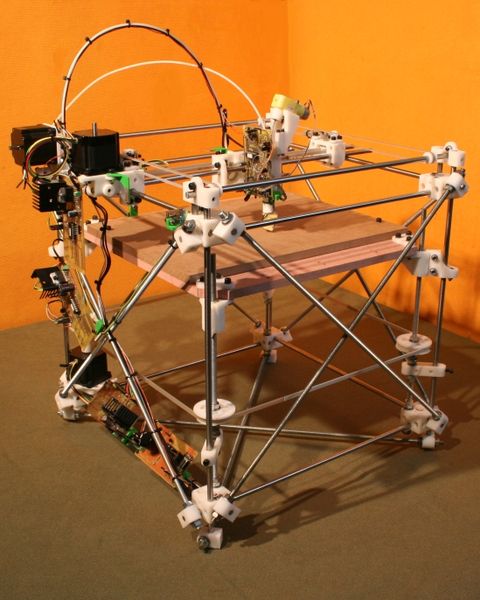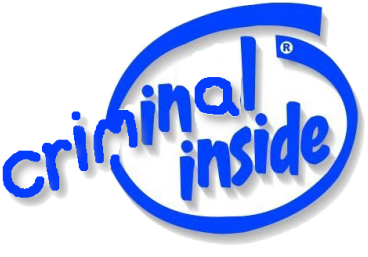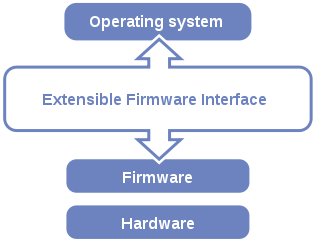11.01.13
Posted in Free/Libre Software, Hardware at 9:03 am by Dr. Roy Schestowitz

Summary: What it means to embrace so-called “Open” (freedom-respecting) hardware and why it’s a movement that we should support
Competition can be fine, especially if it’s fair. But competition brings with it some animal instincts that can be destructive (e.g. envy), so increasingly we assess a society which maximises sharing and collaboration. Not everything in life needs to be viewed like a contest. Not even philosophies, although they’re inherently different from brands of more or less the same thing.
“For the betterment of our increasingly-digital society we need to look beyond just software.”The “Open Hardware” movement is in many ways derived from the philosophy laid out by Richard Stallman about 30 years ago. It lets people experiment with the hardware they bought and it also encourages (if not forces) manufacturers to share designs in order to maximise improvement among everyone. It’s hardware liberalism, as opposed to protectionism. Selfishness and isolation get replaced by the common good, and savings are gained (for more employment, more investment) by eliminating reinventions.
There are two new stories about Open Hardware; one is about camera design and the other about why Open Hardware is revolutionary. There are many branches of freedom (or as some redefined it, “openness”) and they includes free content, free data, and free hardware (commonly known as “Open Hardware” or “Open-source hardware” these days), where “free” refers to freedom. For the betterment of our increasingly-digital society we need to look beyond just software. Sometimes hardware limits our software freedom (c/f UEFI ‘secure’ boot). The spirit of sharing is collectively beneficial to all, except to those who hoarded or blocked innovation in particular areas (i.e. created a monopoly and guarded it with new laws such as patent law). █
Related/contextual items from the news:
-
The frustration of locked-down proprietary camera firmware is one that many of us are familiar with. It’s pretty annoying to have a camera that could clearly be capable of all kinds of things but is heavily restricted by the locked-down software it is running. This is of course the origin of the Magic Lantern project, which was borne of the frustration of camera hardware that was capable of doing so much but was restricted by the built in firmware and the policies of the companies involved. It has taken a lot of work by the Magic Lantern team to gain access to the camera and to build an understanding of the way it functions, so that they could run their own software alongside the camera firmware and new features could be added.
-
Most of us that are technologically inclined are familiar with the term open source. It is often used in a software context to mean that the source code of the software is openly accessible and mutable by anyone who possesses the know-how. This software gives designers the freedom to change, improvise and customize the source code to anyone’s use. In essence, open sourcing software enables the software to become a building block rather than an opaque commodity.
Permalink
 Send this to a friend
Send this to a friend
10.24.13
Posted in Free/Libre Software, Hardware at 9:04 am by Dr. Roy Schestowitz

Summary: The ascent of machines that are controlled by their users rather than by companies and sociopaths who may run them
ONCE upon a time, the likes of Bill Gates demonised and ostracised people who had shared code and ‘dared’ to suggest that control over software should be put in the hands of many (the users). But that selfish ideology is quickly eroding. Nowadays, devices that sell well are those which empower users, both at the hardware and software level. Raspberry Pi, for instance, is selling quite well [1] and creating jobs in the UK. The Raspberry Pi Foundation sure is thriving [2] and it is getting support from some large corporations. Arduino too is doing well [3] and it’s hardly alone; this is part of a trend now [4] — something we never saw in previous years.
Software freedom is very important, but it is not enough. If hardware refuses to boot particular bits of code (e.g. TiVoization) or if Free software like Ubuntu indirectly trasmits your search queries to strong CIA partners like Amazon, then freedom is seriously compromised. We need to work at many levels to assure that hackability (as in modifiability) returns to being the norm. █
Related/contextual items from the news:
-
For British computing this is quite a day. The Raspberry Pi Foundation has announced that a million of the tiny cheap computers aimed at transforming education have now been made in the UK.
-
The creators of the $25 credit-card-sized microcomputer Raspberry Pi didn’t intend to start a hacking revolution — they just wanted to encourage a new generation of young computer users to learn how to program.
-
-
A Shenzhen-based startup called Wizarm has launched an Indiegogo campaign for a hackable media player with DVR recording, HDMI pass-through, Miracast support, and video overlay capabilities. The Wizarm device dual-boots Android and Linux on a Samsung Exynos 5250 system-on-chip, and offers SATA storage and extensive I/O including USB, HDMI in/out, DisplayPort, and S/PDIF.
Permalink
 Send this to a friend
Send this to a friend
10.18.13
Posted in GNU/Linux, Hardware, IBM at 3:17 pm by Dr. Roy Schestowitz

Via Siemens
Summary: Recalling the real goal of IBM’s Linux-themed marketing and the side effects of this strategy
IBM only embraced the “Linux” brand in order to help sell its own hardware (so expensive that IBM does not publicly advertise the price — one has to call or request a quote online). It is merely an investment [1], an attempt to shift to Power Systems [2] all sorts of GNU/Linux or UNIX customers (many still move away from UNIX, e.g. [3]). When it comes to distributions [4], IBM’s Power limits those choices somewhat. IBM is increasing hardware choices in some sense, but this happens to concurrently reduce some distribution choices. Then again, some are not fans of the meme that “Linux is about choice” [5], so to them, IBM’s selfish agenda is irrelevant here. █
Related/contextual items from the news:
-
At the most recent LinxuCon, IBM announced it will invest $1B in Linux and related open source technologies over the next five years.
-
In case you haven’t noticed, IBM thinks that getting customers to put their Linux workloads onto Power Systems is going to reverse the sales decline for the platform. That decline has more to do with all flavors of Unix falling out of favor compared to Windows and Linux in the data centers of the world with the exception of very large workloads, usually databases, and the relatively high prices that Unix system vendors charge for their iron.
-
When Senwes, one of the largest grain handling companies in the southern hemisphere, decided to upgrade its main data centre and disaster recovery site, it was looking for flexibility.
-
There are hundreds of flavors of Linux, each with their own focus and opinion on how the soup of open source tools should be assembled and maintained into a workable operating system. Choosing one for your desktop can be fun, as you get to try different distributions out without a whole lot of investment. However, when choosing a flavor for the datacenter or cloud hosted environment, you may find yourself stuck with your decision for a long time.
-
In a famous posting to fedora-devel-list back in 2008, adam Jackson wrote: “If I could only have one thing this year, it would be to eliminate [the meme that ‘linux is about choice’] from the collective consciousness.”
Permalink
 Send this to a friend
Send this to a friend
Posted in Free/Libre Software, Hardware at 11:10 am by Dr. Roy Schestowitz

Summary: Efforts that label themselves “Open Source Hardware” are gaining popularity, but Arduino and other efforts need to keep the notorious vandaliser, Intel, well out of their boundaries
So-called “Open Source Hardware” or “Open Hardware” is derived from the ideals of Free software, as laid bear by Richard Stallman 30 years ago. The notion that we should share designs and permit people to modify designs is not entirely novel because stuff like Lego encourages us and our children to do so. Talking about business models [1] is another, perpendicular/orthogonal issue and whether it can relate to software or not [2] might not matter so much, either. It’s like when people argue with Stallman about whether Free software is good for business or not, as if having a business model is somehow essential to justifying freedom or somehow defends denying people their freedom.
Arduino, one of the leading forces in the area, is now speaking to the press [3] and greedy, malicious Intel tries to interject itself into it, just like it did with OLPC, basically destroying the project. Arduino would be wise to learn from OLPC and send Intel far away. █
Related/contextual items from the news:
-
After some time now, the Open Hardware Ecosystem and Business sector gained some significant traction. An excellent presentation by Mathilde Berchon was recently release at the open hardware summit, trying to summarize the increasingly interesting diversity and numbers of the OSHW business. W
-
I see SparkFun Electronics mentioned often in my social media stream, so I jumped at the chance to interview Chris Clark, the company’s Director of Information Technology.
-
Ars conducts a Q&A with Massimo Banzi as Arduino’s rise continues.
-
Permalink
 Send this to a friend
Send this to a friend
09.20.13
Posted in GNU/Linux, Hardware at 8:13 am by Dr. Roy Schestowitz

Source: Official GDC
Summary: The long-ridiculed claims that GNU/Linux has reached its year of desktop prominence are becoming mainstream
Valve is shifting away from Windows and will soon reveal its GNU/Linux appliance [1-10], which will be a gaming machine. Intel, the largest chipmaker, is meanwhile showing increasing levels of support for GNU/Linux leaders [11] (except Canonical’s forks with Ubuntu [12]) in order to sell chips on devices [13-14], desktops/laptops [15], and servers [16]. There is clearly a lot of work going into kernel-level improvements [17-20] and Intel now foresees a future of GNU/Linux as the dominant desktop platform [21-22]. Given that even allies of Microsoft (or former staff-turned-entrepreneur with net worth of $ 1.1 billion) switch to GNU/Linux so enthusiastically, can anyone still say with a straight face that GNU/Linux will never “make it”? █
Related/contextual items from the news:
-
Valve are making another Linux push towards having their full library available on Linux, this time it’s Half-Life: Source & Half-Life Deathmatch: Source.
-
-
Running With Scissors has revealed some but not all of the details of what will come with the Postal 2 (Steam, Desura) DLC!
-
-
Gabe Newell, CEO of Valve declared that proprietary software and closed platforms are gaming’s past, its future is open and on Linux.
-
For those that didn’t yet watch Gabe Newell’s talk about Linux gaming, at the end of the presentation he notes next week will be more information from Valve about their plans to bring Linux into the living room.
-
Valve chief blasts PC market, promises big news is coming next week.
-
Gabe Newell was one of the prominent speakers today during the first day of LinuxCon in New Orleans. Here’s an upload of his presentation where he’s trumpeting the benefits of Linux for servers and gaming. Gabe believes, “Linux is the future of gaming.”
-
Linux is landing on gaming systems and embedded devices, but challenges still remain as leading technology thinkers detail the state of Linux at the LinuxCon conference.
-
The gamers among us waited… very… patiently… for Steam to come to Linux. This week, Valve co-founder Gabe Newell came to LinuxCon to talk about Linux, gaming, and how important open source is to the future of gaming, which given the audience, he described as “sort of like going to Rome and teaching Catholicism to the Pope.” In even better news, he also strongly hinted at a Steam Box announcement next week.
-
Open Source is all about collaboration and contribution and two leading communities are working towards making Wayland a reality.
-
As a major set-back to Canonical’s plans for Mir, Intell has pulled the carpet from underneath Canonical by announcing that they won’t support XMir.
-
EMAC announced a fanless, Linux-ready PC/104 format single-board computer built around Intel’s 1.6GHz Atom N270 processor, available in a wide temperature (-40 to 80°C) model.
-
Acrosser announced a Fedora Linux-ready Mini-ITX single board computer (SBC) equipped with a dual-core 1.86GHz Intel Atom D2550. The AMB-D255T3 supports up to 4GB of DDR3 RAM, can run dual displays via VGA, HDMI, or 18-bit LVDS interfaces, and offers both PCI and Mini-PCIe expansion.
-
Intel and Google have announced new Chromebooks powered by the much talked about Haswell processors. Two major PC vendors ASUS and Toshiba have joined the Chrome OS club which include Samsung, Acer and HP. While HP and Acer are offering new Chromebooks, ASUS is brining new Chromebox to the market.
-
At LinuxCon, Dirk Hohndel, Intel’s chief Linux and open-source technologist, explains why Intel is invested in open source and what his company is doing with the OpenStack cloud.
-
It’s been a while since last hearing anything from Intel engineers about their proposed Power Capping Framework or Running Average Power Limit driver for the Linux kernel, but that changed today. New patches have been released for the power monitoring and limiting kernel code.
-
Last week I ran a System76 Galago UltraPro Preview with some benchmark results and a special article looking at the Intel Iris Pro 5200, the Haswell graphics cores with 128MB of dedicated video memory stacked onto the die itself. Those tests were done remotely but now with having a System76 Galago UltraPro ultrabook review sample in the labs, here are some fresh tests looking at the very latest state of Haswell Iris Pro graphics under Linux. The benchmarks cover the state of Ubuntu 13.04 going through the latest open-source Linux graphics driver code with the yet-to-be-released Mesa 9.3 and the Linux 3.12 kernel.
-
For the past few days at Phoronix we have begun looking extensively at the Intel Iris Pro 5200 graphics under Linux, since receiving the System76 Galago UltraPro. The Iris Pro 5200 are the new high-end Intel Haswell graphics that have 128MB of embedded video RAM on the die, which should yield a nice performance boost when properly implemented within the Intel Linux driver. Already our testing has found the Iris Pro performance on Linux has doubled with open-source driver improvements since Haswell’s launch. Now we’re out today with our first Intel Iris Pro OpenGL gaming benchmarks between Ubuntu Linux and Microsoft Windows 8 for this Intel Core i7 Ultrabook.
-
Intel’s Ian Romanick will take to the Linux Plumbers Conference tomorrow with a plea to work together to provide better capabilities across the Linux stack for better debugging and profiling of graphics applications/systems on Linux. The open-source Intel Linux Mesa developer himself calls the current graphics debugging situation on Linux a “disaster” to be fixed.
-
Today in Open Source: Intel thinks the year of the Linux desktop is here. Plus: Linus and Moore’s Law, and Tiny Core 5.0 screenshots
-
New Orleans: The Sept. 18 LinuxCon keynote sessions were kicked off by Intel Chief Linux and Open Source Technologist and Linux kernel developer Dirk Hohndel who said that client computing today is mostly Linux. Thanks to Android on smartphones and tablets, plus the rise of Chromebooks, Intel sees Linux as the leading end-user operating system.
Permalink
 Send this to a friend
Send this to a friend
09.12.13
Posted in GNU/Linux, Hardware, Microsoft at 10:07 am by Dr. Roy Schestowitz
Microsoft has broken platform bridges like GRUB

Summary: How Microsoft’s fight to complicate GNU/Linux booting can be challenged, essentially by making it clear that GNU/Linux is the favoured choice
LAST week I happened to install Kubuntu through Wubi*, a useful tool which Canonical is making deprecated.
About a year ago Microsoft introduced UEFI restricted boot in an attempt to make it harder to change so-called “Windows PCs” (tying software to hardware) into GNU/Linux-running PCs and based on some new posts this continues to pose issues or complications for users of Ubuntu and its derivatives, despite Canonical playing along with Microsoft. For those who didn’t know that Microsoft is a terrible partner perhaps this would be a wake-up call.
Clearly enough, “it is the OEM monopoly that is keeping GNU/Linux from being widespread on the desktop,” iophk explained, citing this new article titled “Linux is clearly the superior operating system”. To quote one key part:
With all due respect, my colleagues are wrong. Linux is hand-down the best option for computing. It isn’t even a competition. Neal Stephenson said: “Macs are hermetically-sealed sedans that look great and have a lot of advertsing. Windows machines are big SUVs that break often, but they’re everywhere and everyone knows how to use them. Linux computers are free tanks that go 90 mph in swamps, get 100 mpg and never break down.”
Jim Lynch, a frequent reviewer of GNU/Linux distributions for around half a decade now, responds in IDG:
Is Linux the best operating system?
Today in Open Source: Is Linux the best operating system?
[...]
He makes a strong case for Linux, and while I mostly agree with the article’s take, I’m still very hesitant to declare a “best” operating system. Why? The choice of an operating system depends so much on the individual user’s needs. This can vary quite a bit depending on the person.
While this may be true, it is important to bear in mind that even Android is in some sense a distribution — one that most of my family has absolutely no problems with. The myth of GNU/Linux as the “hard choice” or the “still catching up” platform continues to plague the press and leads to a shallow consensus which lets Microsoft get away with hardware-software tie-up (as in UEFI restricted boot). If regulators accept that the bundling imposes a worse choice on all buyers, then regulatory action will be easier to make a success. There are already formal complaints about UEFI. █
___
* It is a laptop which comes with Windows and it is still being prepared to function as a replacement workstation here.
Permalink
 Send this to a friend
Send this to a friend
09.11.13
Posted in Free/Libre Software, GNU/Linux, Hardware, Windows at 4:05 pm by Dr. Roy Schestowitz

Unlock PC from the OS
Tere is how to do it;
Step 1, manufactures of physical hardware shall adapt an “OUHP” (Open Universal Hardware Protocol), so that every OS can make use of the SAME hardware drivers regardless of the OS brand.
Step 2, include in the PC physical hardware a replaceable memory module storage system that stores the hardware drivers and a “boot loader GUI”. The hardware drivers should always remain with the PC physical hardware in a protected environment away from the OS.
Benefits are faster loading drivers, as compared to how UEFI loads drivers on slower memory. Other advantages are better security (firmware), not compromised by the software layer of an OS and the choice of running any OS on the hardware.
This makes possible the ability to run any OS on your hardware, and allowing the user to run your software in the OS environment on any PC in the world that supports the universal hardware protocol, giving the user choice and freedom.
Unfortunately, Microsoft would never accept an open honest universal standard that everyone (all software developers) could use freely without restrictions; given how Microsoft can only compete when the customers cannot choose.
What would YOU rather buy;
- A device locked into a monopolized market forcing their brand upon you or;
- an open platform that allows any OS of your choice to run your software on any PC system in any language globally.
What do your readers think about this idea of unlocking the PC from the OS?

I would like to offer another project I am working on, thinking some of your readers might be interested in know about my RDSS – “Relevant Data Storage System” idea.
Why do we need a more relevant storage file system?
So the PC user won’t be required of a “forced remembrance” of the navigation address of folder/file names in a hierarchy for later data acquisition that was created by different people at different times using different languages.
When another person joins a multi user networked system, they wouldn’t know the files names or the location of where those files were stored by the other individual/s before them. Who is to say that the creator of those files or data was ever assigned a proper “coherent” name for those files/data, right?
So what happens when the PC users/operators include “non-native” speakers?
My idea is simple, data shouldn’t be stored by human “designations” as file names. The solution is to make the software application assign a value to that data and then store the data where it would best function in terms of both recall, relevancy and distribution.
This is actually easy to do, if the data includes “meta tags”, making possible for the OS and the application layer to recall your relevant data. Software applications would become smarter, helping the user label their data properly for relevancy, recall and distribution automatically.
Instead of seeking data by using pathways, human beings would be freed to think in their own natural thinking process. The data is recalled by the user for the relevancy of their data, rather than by the pathway, navigation or hierarchy.
Which method would you value more;
- a method of “forced remembrance” by all users to locate each other’s data by using pathway hierarchies or;
- a method of recalling only “relevant data” by using “relevancy”!
Benefits of my “Relevant Data Storage System” is that the only thing the PC user needs to know is the relevancy of they data! No need to hunt around, where did I put that file? I don’t remember the file name! What to do? OMG!
Surely, it makes more sense to match the method of recalling data by using a more natural human process, and is why ICANN adapted the method of assigning IP Addresses with “names” so people could more easily access sites online as an example.
What do your readers think about this idea of applying relevancy to recall relevant data as compared to the forced remembrance of finding user data using folder/file pathways? █
Permalink
 Send this to a friend
Send this to a friend
08.11.13
Posted in Antitrust, Hardware, Microsoft at 2:09 pm by Dr. Roy Schestowitz

Summary: Resistance to bogus (to most users) novelty which gives corporations rather than users power over computers all around the world
Some prominent operating system developers already complain about what they perceive to be an anticompetitive measure. Intel, which spearheads UEFI advocacy, needs Windows right now, especially because the best-selling devices, which run Linux, are based on non-x86 chipsets. We oughtn’t let Intel, a criminal company with a long track record at that, get its way.
Richard WM Jones mentioned UEFI/EFI the other day, alluding to problems it was causing him. He wants to bring back the BIOS and concludes as follows:
Anyhow, this explains how I’ve gone from 3 working Fedora ARM systems to 0 in the space of two days. This is also the reason I think EFI is a terrible mistake.
Now that we know of back doors for the NSA we know that with UEFI some motherboards can be bricked remotely (the US was concerned that the Chinese would do such things). UEFI is also a patent trap and a facilitator of antitrust abuses that merit it a boycott, Why again does an ordinary user need UEFI? Benefits do not outweigh the dangers, so we need to shun UEFI for now. █
Permalink
 Send this to a friend
Send this to a friend
« Previous Page — « Previous entries « Previous Page · Next Page » Next entries » — Next Page »


























 Content is available under CC-BY-SA
Content is available under CC-BY-SA